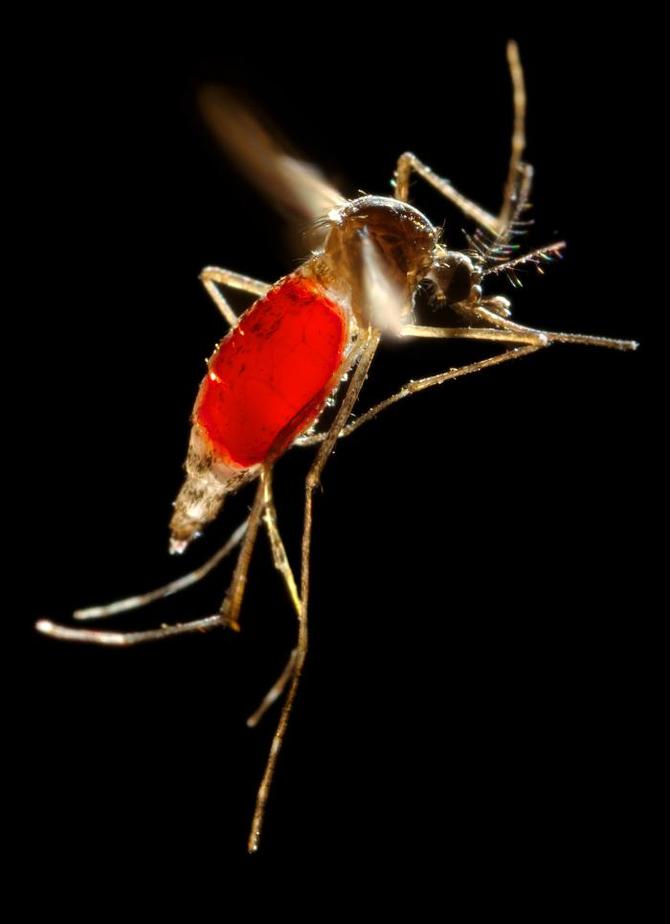Mosquito season is just getting started in California, but Tim Phillips, head of the Fresno Mosquito and Vector Control District, is getting used to dealing with the buzzers year-round. In December, for instance, he fielded a call from residents who were being attacked by tiny black-and-white skeeters inside their home. The insects, it turns out, were breeding in the family’s humidifier.
The offending bugs were yellow fever mosquitoes (Aedes aegypti), invaders that arrived in Fresno County in 2013. They’re about half the size of local skeeters, can breed in as little as an ounce of water (think bottle cap), and are resistant to most pesticides. They feed during the day and, as the Fresno family discovered, readily take up residence in people’s homes during the winter. They’re also far more aggressive than native mosquitoes. “These are vicious biters,” Phillips says. “They’re voracious. They just keep coming.”
But perhaps topping the long list of current concerns over Aedes aegypti is that they’re capable of transmitting Zika.

Yellow fever mosquitoes and the equally bold Asian tiger mosquitoes (Aedes albopictus) were rarely detected in California before 2011, but since then have since spread to 12 of the state’s 58 counties. The Golden State is among the most recent to host the invaders; the insects already can be found in the eastern half of the country and some southern states. Both species can transmit dengue, chikungunya, and Zika.
As of March 2, the Centers for Disease Control and Protection reported that 153 people in the United States have tested positive for the disease. Seven are Californians, including a pregnant woman living in the San Francisco Bay Area who recently returned from Central America. Only about 20 percent of people infected with the virus become ill, and in most cases their symptoms are mild—consisting primarily of rash, fever, joint pain, and conjunctivitis—and last about a week. The disease is of particular concern to pregnant women, as it’s suspected of causing microcephaly (small heads) in fetuses. So far, all cases in the U.S. have been travel related.

But officials are bracing for when someone here gets Zika from a bug bite—when it passes from the blood of an infected traveler to a local mosquito, and that mosquito then transmits the virus to another local person. “That’s our nightmare scenario,” Phillips says.
The possibility of such an outbreak on U.S. soil has spurred President Barack Obama to request $1.8 billion in emergency funding to enhance Zika preparedness at home and abroad. It has also drawn attention to the crazy quilt of mosquito control districts across the country.
While it’s possible that Zika could gain a foothold in California, the risk of local transmission is currently low, says Vicki Kramer, chief of the vector-borne disease section at the California Department of Public Health. “The distribution of Aedes mosquitoes is relatively patchy,” she says. “We do anticipate that the mosquitoes are here to stay and likely will increase in distribution and abundance.”
Kramer explains that if Zika lands in California, officials will find out in one of two ways. Someone may test positive for the virus and it won’t be travel-related; the person won’t have left the country herself or had sex with someone who recently visited a place in South or Central America where the virus is found. Or it may be identified through the mosquito monitoring done by vector-control districts, which regularly put out traps and then test the skeeters they catch for diseases.
A cluster of Zika cases from local mosquitoes is more likely elsewhere in this country. “Florida has had the Aedes mosquitoes a lot longer, they have a lot of them, and they do occasionally get a little dengue outbreak,” says Shannon Bennett, an expert in mosquito-borne diseases at the California Academy of Sciences.

If someone in Fresno County tests positive for the virus, Phillips’ team will leap to action. They’ll put out mosquito traps in the patient’s neighborhood, and if they find Aedes, they’ll fog the area and scour the blocks for any possible breeding sites. “The goal is to keep a buffer between the infected person and mosquitoes,” Phillips says. The infected person is also asked to take precautions to keep from being bitten for 14 days, Phillips says.
Officials are also asking residents to pitch in by dumping out standing water on their property and reporting mosquitoes that bite during the day to their county vector-control office, which could help track Aedes‘ expansion into new areas. People are also encouraged to install window screens and use insect repellent outdoors.
Such precautions, says the Department of Health’s Kramer, have another benefit as well: helping to safeguard people from a virus that’s already here, West Nile. In California alone, that disease sickened 800 and killed 45 people last year.

This story originally appeared on Earthwire as “Bracing for Impact” and is re-published here under a Creative Commons license.




